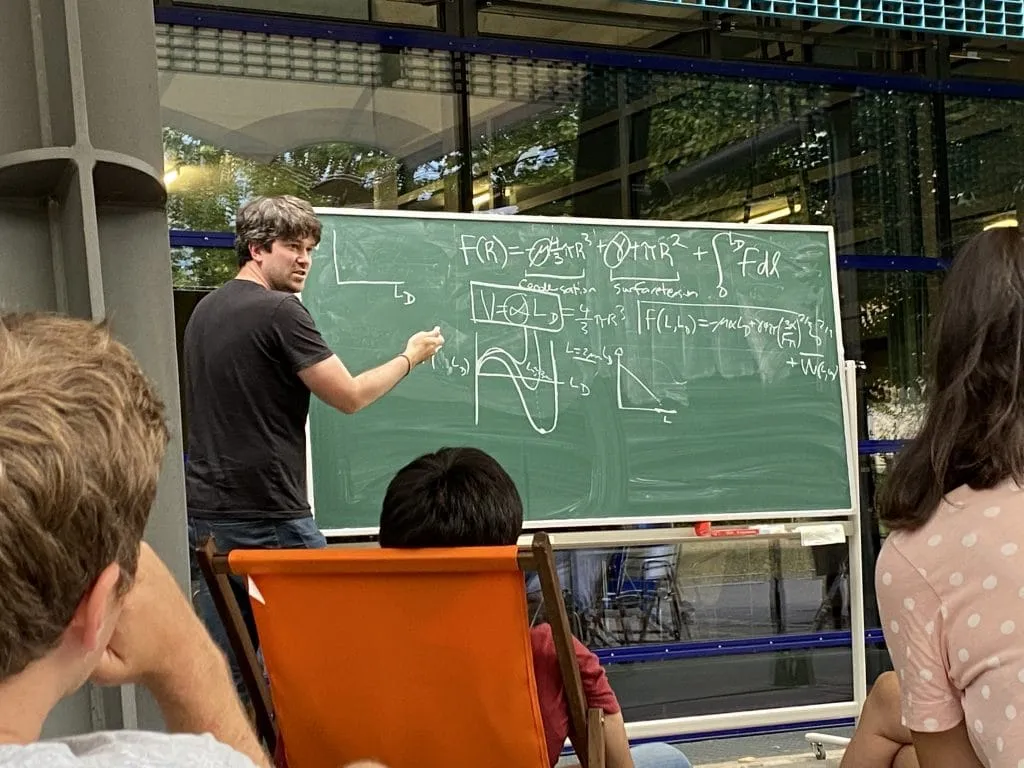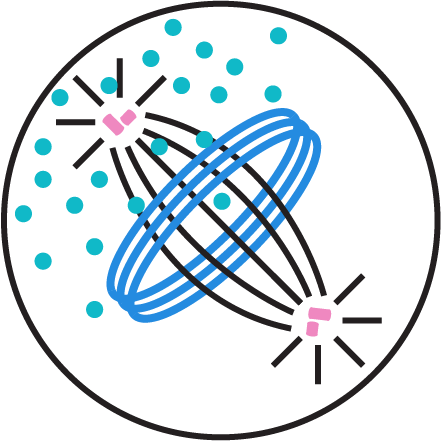Keeping in mind social distancing rules while ensuring a relaxed and informal setting, Tina, Jacobo, and Anna launched the Postdoc Summer Chalk Talks 2020 at the MPI-CBG to offer a weekly Friday seminar during the summer holidays.
In the first round, Tina Wiegend from the Hyman & Grill Labs, and Thomas Quail from the Brugués Lab, presented their research on the role of bimolecular condensates in cellular structure and function.

Tina Wiegand introduced her theories on the regulation of WASP and Actin condensates in the first round of Postdoc Chalk Talks in Summer 2020. Photo Credit Eduardo Jacobo Miranda Ackerman.
Tina’s talk “Actin(g) in condensates” exploring how condensates containing globular actin and its regulators WASP and Arp2/3 are regulated. She explored multiple theories to explain what she has observed in the experimental model C. elegans and in vitro reconstituted condensates from purified proteins. From mechanical forces, to compositional control and spatial conformation, Tina is testing all possibilities to explain how WASP condensates polymerise actin in the presence of Arp2/3 and control its shape, size and location. Through her research, Tina aims to answer the question “what is the role of condensates in the formation of the actin cortex in C. elegans.

Thomas Quail explains the mathematical function the describe the capillary forces exerted by FOXA1 condensates on the DNA in the first round of Postdoc Chalk Talks in Summer 2020. Photo Credit Mohamad Almedawar.
Thomas followed with a rather entertaining talk, “Capillary forces and condensates” on the use of a mathematical formula to explain how FOXA1 condensates bring promoter and enhancer regions of the DNA in close proximity to induce transcription despite being linearly separated by several kilo bases (kb). FOXA1 is a pioneer factor (transcription factor that binds to heterochromatin and induce its unfolding) that has a DNA binding domain and an intrinsically disordered region that is postulated to enable phase separation. The mathematical function he developed explains the relationship between free energy and capillary forces pulling on the DNA into the condensate, allowing the promoter and enhancer regions to come in close proximity.
